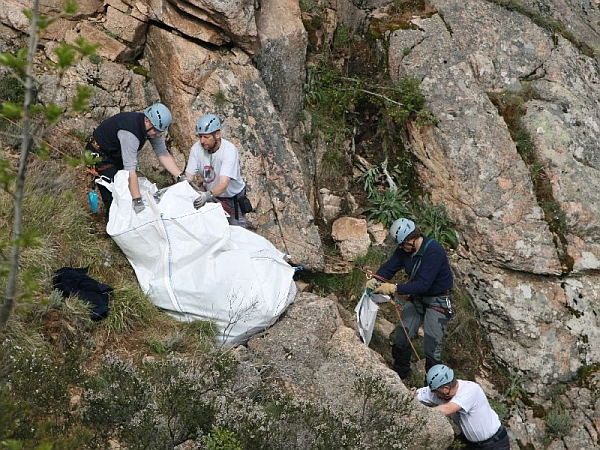For a number of Slovenian families, December 1, 1981, promised to be an exciting day. They were headed to Corsica for a one-day trip aboard an MD-81 aircraft operated by the Ljubljana-based Inex-Adria Arways (now known simply as Adria Airways). The trip was organized as a promotional event by the Kompas tourist agency. A few dozen of the 173 passengers were Kompas employees who flew for free; many others were young families who took advantage of the Yugoslav national holiday and the availability of cheap tickets to explore an inviting Mediterranean island. There were many children aboard, including the co-pilot’s son, along with three infants.
After an uneventful flight, the MD-81 entered a holding pattern as it was awaiting clearance to land at Ajaccio’s Campo dell’Oro Airport. The aircraft was in thick clouds, and because the airport lacked radar, air traffic controllers relied solely on radio communication to locate the aircraft.
Unfortunately, the language used by the crew and the air traffic controllers was – in the words of investigators – “imprecise.” Because of errors in communication, air traffic control believed that the aircraft was flying above the sea and instructed the crew to descend. The crew, who had never before landed in Ajaccio, followed the instructions and descended below the holding altitude. The aircraft, however, was not over the sea at all. Instead, it was flying among the high, granite peaks of the island’s rugged interior.
At approximately 8 A.M., sirens rang out in the cockpit. It was the aircraft’s Ground Proximity Warning System alerting the crew that they were flying too low over terrain. For reasons that remain unclear to this day, the crew did not react immediately. When they did, it was too late. One of the plane’s wings clipped the peak of Mt. San Pietro. The aircraft barreled out of control and crashed into the granite cliffs of the mountain on the other side.
Even though villagers in the towns below the mountain heard several explosions, rescue teams initially searched the sea, rather than the island’s rocky interior -- air traffic still believed that the aircraft was over water at the time of its last radio message. When the first teams did finally locate the wreckage on the slopes of Mt. San Pietro, they saw that the plane had disintegrated, instantly killing all 173 passengers and seven crew members. It was the worst accident in Slovenian aviation history, and it remains the second worst air crash on French soil. A church in the village of Petreto-Bicchisano was transformed into a makeshift morgue; that’s where most of the bodies were identified.
In Slovenia, the crash was a national tragedy. Because of the nation’s small size, it seemed that everyone knew someone affected by the crash. Entire families were wiped out and children were left orphaned. Even small details connected to the crash intrigued the Slovenian public: As the names of the victims were made public, it emerged that some of them had secretly traveled to Corsica with companions who were not their spouses. People who had missed the flight celebrated their good luck. Among them was Miro Cerar, an Olympic gold medalist, who had canceled the trip because of an illness in the family.
But for most of Slovenia, the crash was a trauma whose impact was felt for years. Some of the victims’ families sued the airline, alleging that it kept some of the insurance money that should have gone to the families. All the while, the wreckage remained scattered on Mt. San Pietro.
Through the years, however, many Slovenians who had come to visit the crash site established warm bonds with Corsican locals. The long-time mayor of Petreto-Bicchisano, Fieschi Toussaint, made it his mission to provide visitors with information and practical advice. He also drew public attention to the wreckage that remained on the mountain.
As a result of these ties and spurred by a television documentary, a cleanup campaign was organized in 2008. It was backed by the Slovenian government, as well as by Adria and Kompas. Dozens of volunteers, including experienced mountain rescuers and soldiers, flew to Corsica, where they picked up pieces of the wreckage – as well as remaining body parts – from the slopes of Mt. San Pietro. In just a few days, they removed 27 metric tons of debris.
At the time, a plaque was also installed near the summit, near the spot where the MD-81’s wing struck the mountain on that fateful day more than 32 years ago, and made a remote Corsican mountain a part of Slovenian national consciousness.
Jaka Bartolj


































































